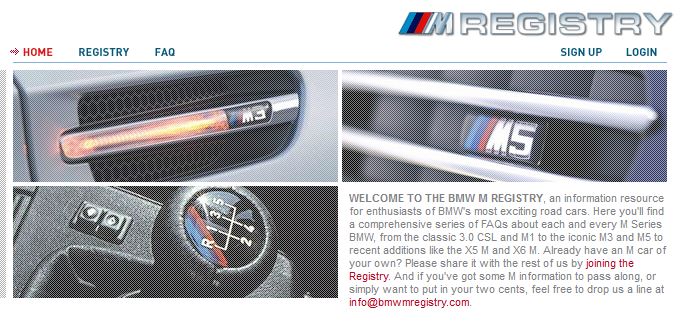
Here’s part two of my interview with Alex Palevsky, co-founder of BMW M Registry. Alex talks about BMW M’s move to turbo engines, his dream M car and what to look for when buying on the used market.
Part one of this interview was published last week.
BMW’s decision to use turbo engines in M models is a hot topic right now. Has the move away from normally aspirated engines changed what M means?
I don’t think so at all. Though there will always be some who just won’t be able to accept any M car with a turbocharger, you have to remember that BMW Motorsport developed the 2002 Turbo way back in 1974 and so there is a strong historical precedent for turbocharged M cars. And even though the “high rpm” concept of developing peak power at the very top of the rev range has become synonymous with BMW M over the past decade, this has not always been the case. The S70 V12 in the 850CSi, for example, was incredibly torquey down low, as was the S62 V8 used in the E39 M5.
Personally, I think BMW M’s obsession with stratospheric redlines actually got a bit out of control for a while. I mean, the S85 V10 was an engineering marvel but it really didn’t do much at all until it spun past 5,000 rpm and that made the last M5 and M6 feel pretty sluggish unless driven in absolute anger. I’d much rather lose a few thousand rpm at the top end and gain some serious torque down low, which is exactly what the forthcoming turbocharged M engines are going to deliver.
Just consider the N54 motor in the current 1 M coupe. Though BMW M’s involvement in its development was relatively minor, it’s still an incredibly exciting powerplant that delivers a huge and exciting rush of torque right off the line. In fact, there’s very little downside to using turbos these days thanks for modern advancements in technology.
BMW has even managed provide this motor with the kind of lively throttle response that is typical of normally-aspirated M motors, and those kinds of M characteristics are only likely to improve as these turbocharged motors evolve in the future.
If you could build today a brand new M car, what would it be and why?
Honestly, I already own three of the best BMW M creations of all-time, but if I had the opportunity to do a fantasy build at BMW M then I would probably create the following two cars:
A British Racing Green (non-metallic) Z1 roadster with a complete European-spec E36 M3 drivetrain and chassis, plus an E91 M3 CRT Touring in that same non-metallic Dark Blue used on the E90 M3 CRT prototype but with the Sakhir Orange leather interior of the E90 M3 CRT show car.
Between those two cars, I think all my driving needs would be covered.
Finally, what advice would you have for someone looking to purchase a used M car?
That’s really hard to say without knowing the person’s specific needs and expectations, but personally I always look for a couple of things when examining any used M car.
First off, I want to know how original it is. Contrary to popular belief, 99 percent of aftermarket parts perform worse than OEM, so if a car is heavily modified then I tend to be turned off. Of course, parts from selected tuners who do real R&D work like Dinan and Alpina are exceptions.
Second, you have to get a very clear picture of the service history. A car with 100,000 miles that has been religiously serviced by a single enthusiast owner who pampered the car its entire life is worth far more in my book than a car with 10,000 miles that has gone though 13 different owners and comes with just a few scraps of random paperwork.
Finally, any potential M car owner should fully understand what they are buying and fully accept the car for what it is. For example, an E30 M3 is a very slow car by modern standards, and there is almost nothing that can be done to increase performance short of a complete Sport Evolution engine conversion, which is extremely expensive. Anyone expecting it to be at all fast in a straight line will be sorely disappointed and should look elsewhere.
Conversely, an E39 M5 is a wonderful sports sedan with a charismatic motor and wonderful build quality, but it’s never going to handle like a lightweight sports car, no matter how much money you throw at the suspension. It’s just not that kind of car, and buyers need to view any M car within its appropriate context to truly appreciate it.